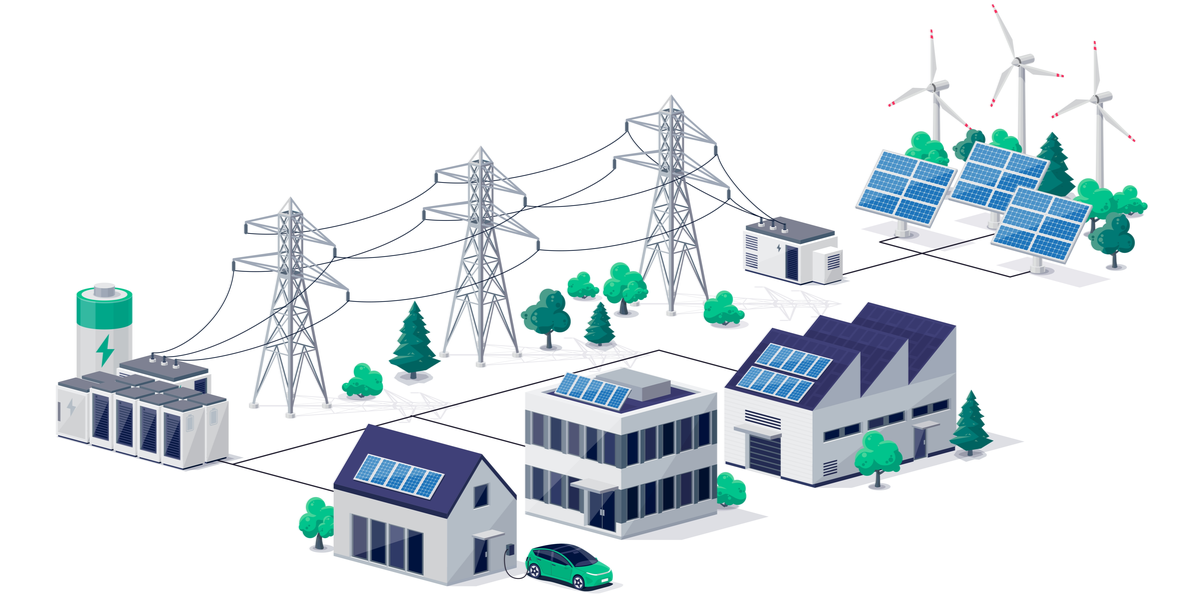Looking Back at Energy Efficiency in 2015: Transitioning to a Modern Energy Economy
Let's Save Energy
Alliance to Save Energy's Blog
Looking Back at Energy Efficiency in 2015: Transitioning to a Modern Energy Economy

As 2015 comes to a close, we felt that it was a good time to look back at the strides made in energy efficiency over the last year. From action on the Hill, to increased discussion on the presidential campaign trail, and energy productivity progress across the private sector, energy efficiency has remained a hot topic. Moving forward into the new year, we are optimistic for forthcoming energy efficiency successes across sectors in 2016.
Action on the Hill
The Alliance and our energy efficiency champions in Congress made great strides on Capitol Hill in 2015. In April, Congress passed S. 535, the Energy Efficiency Improvement Act of 2015, which became the first piece of energy legislation signed into law by President Obama. On a bipartisan basis, the Senate Energy and Natural Resources Committee approved a comprehensive energy bill, and in July passed S. 720, the Energy Savings and Industrial Competitiveness Act, sponsored by Alliance honorary board chair Senator Jeanne Shaheen (D-N.H.) and vice-chair Senator Rob Portman (R-Ohio). The bill has overwhelming bipartisan support and the capacity to create 192,000 jobs, produce energy savings worth $16.2 billion annually and reduce annual carbon dioxide emissions by 95 million metric tons.
Most recently, Congress delivered an early holiday gift of energy efficiency tax incentives to help American consumers and businesses invest in products and technologies that will return energy and dollar savings. The omnibus appropriations and tax extenders bill approved by Congress reinstates and extends until 2016 a tax incentive of up to $500 for families that purchase qualifying energy efficiency products; provides home builders and/or manufacturers up to $2,000 for building energy-efficient homes; provides a tax deduction to encourage efficiency upgrades of commercial buildings; and, makes permanent the tax credit for investments in research and development.
Energy Efficiency for the Clean Power Plan
In August, EPA unveiled the final rule for the Clean Power Plan (CPP), a landmark regulation designed to reduce CO2 emissions from existing fossil fuel power plants 32 percent by 2030 compared to 2005 levels. The CPP represents a tremendous opportunity for energy efficiency, which is the fastest, easiest and most cost-effective compliance mechanism available for state implementation. The Alliance responded with a strategy to educate policymakers, industry participants and energy efficiency advocates about the structure and implications of this rule, all while underscoring the triple-bottom-line benefits that energy efficiency offers for compliance.
Energy Productivity: International Momentum
The energy efficiency and productivity wins we’ve witnessed are not limited to the domestic arena. We can’t forget the launch of the Global Alliance for Energy Productivity in May, an initiative that will promote public and private sector commitments to doubling energy productivity around the world. The Alliance developed partnerships with influential global initiatives – e.g., Sustainable Energy for All (SE4All), the International Partnership for Energy Efficiency Cooperation, and the We Mean Business Coalition – to provide information, tools and outreach on energy productivity issues; participated in numerous high-profile international events (including the 6th Clean Energy Ministerial in Mexico and the UNFCCC COP21 in Paris) to publicize U.S. policy achievements and promote partnerships and synergies with public and private efforts around the world; and laid the groundwork for working with other national and subnational governments (e.g., in India, Europe, China, and Brazil) to develop policy roadmaps for doubling energy productivity.
Our international efforts ended on another high note with the aforementioned United Nation’s COP21 climate change summit in Paris, where we witnessed the historic and unprecedented 195-nation international agreement on climate change put in place. The Alliance will continue to reinforce how efficiency can optimally drive the carbon reduction process as the fastest, easiest and most cost-effective path to meeting CO2 emissions reduction goals. Additionally, the U.S. joined with 19 other countries under the banner of the Mission Innovation initiative to pledge a doubling of clean energy investment. This historic agreement was coupled with the creation of a private sector-led Breakthrough Energy Coalition that has pledged unprecedented investment in early-stage R&D.
Ushering in the New Year
2015 has been full of energy efficiency accomplishments and successful initiatives, but we don’t intend to slow down. We will continue to drive action in the Congress and the Administration to ensure energy efficiency is deployed in the implementation of the Clean Power Plan across the nation. We will continue to work with the U.S. Department of Energy and the Council on Competitiveness to strengthen implementation of Accelerate Energy Productivity 2030 recommendations, and engage businesses and nations to double energy productivity with the Global Alliance for Energy Productivity.
Energy efficiency offers solutions that create jobs and save energy, strengthening energy security and the economy. The Alliance takes great pride in the actions taken by Congress to advance energy efficiency legislation and insure funding for energy efficiency programs, and we are confident that these efforts will continue and advance in 2016.
STAY EMPOWERED
Help the Alliance advocate for policies to use energy more efficiently – supporting job creation, reduced emissions, and lower costs. Contact your member of Congress.
Energy efficiency is smart, nonpartisan, and practical. So are we. Our strength comes from an unparalleled group of Alliance Associates working collaboratively under the Alliance umbrella to pave the way for energy efficiency gains.
The power of efficiency is in your hands. Supporting the Alliance means supporting a vision for using energy more productively to achieve economic growth, a cleaner environment, and greater energy security, affordability, and reliability.



